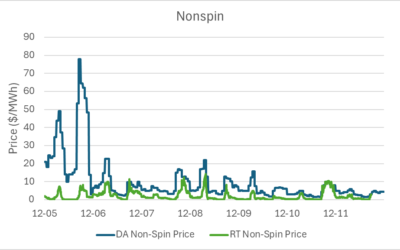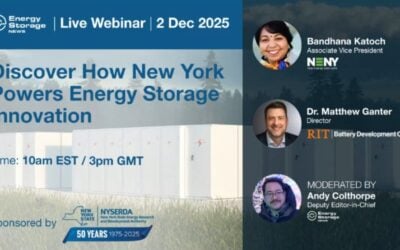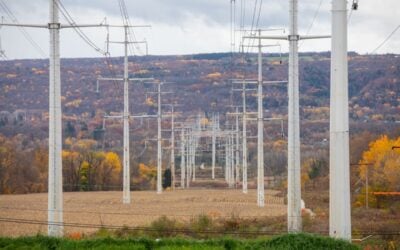
A recent decision from South Dakota’s Public Utilities Commission (PUC) has highlighted a legal permitting ambiguity in the way energy storage facilities are treated in the Mount Rushmore State.
During a regular meeting held on September 23, the heads of the PUC found that NextEra Energy Resources (NEER) would require a state-administered permit to construct and operate one of its new BESS facilities, despite the developer’s assertions.
NEER seeks clarity over PUC jurisdiction
On August 1 2025, NEER filed a Petition for a Declaratory Ruling seeking clarity over the PUC’s permitting jurisdiction over its Crowned Ridge Energy Storage facility.
The 120MW BESS facility will be located on approximately 15 acres of land in amongst a portion of the developer’s operational Crowned Ridge Wind facility located in Codington County, South Dakota.
Try Premium for just $1
- Full premium access for the first month at only $1
- Converts to an annual rate after 30 days unless cancelled
- Cancel anytime during the trial period
Premium Benefits
- Expert industry analysis and interviews
- Digital access to PV Tech Power journal
- Exclusive event discounts
Or get the full Premium subscription right away
Or continue reading this article for free
In the majority of US States, developers of renewable energy projects, such as energy storage, have several pre-established pathways when it comes to obtaining approval to commence construction.
However, the permitting process for energy storage projects in South Dakota is somewhat ambiguous, with developers required to obtain PUC-approval for “energy conversion facilities” over 100MW in size.
As the definition of “energy conversion facilities” within the State Legislature doesn’t specifically address energy storage technology, the PUC’s jurisdiction over BESS in South Dakota is very much up to individual interpretation.
“[Crowned Ridge BESS] is neither going to generate nor convert wind, solar or any other resource into energy. Instead, it’s going to store energy that’s already been converted … and later inject that energy into the grid,” said NEER attorney Michael Nadolski during the recent PUC meeting.
“[NEER] seeks a declaratory ruling that the [PUC] Commission does not have jurisdiction over the construction and operation of [Crowned Ridge Energy Storage]”, said Nadolski.
Crowned Ridge Energy Storage will connect to the Midcontinent Independent System Operator (MISO) grid, where NEER will sell electricity from the project to utility Xcel Energy.
With commercial operations scheduled for December 2027, NEER plans to commence construction on the facility no later than next spring.
PUC staff fail to make a recommendation
Leading up to the recent meeting, PUC Staff reviewed NEER’s request and published its findings as part of a lengthy filing.
Based on the language within the the South Dakota State Legislature, Staff found that the BESS facility could be seen “as a secondary generation resource, which does not produce electricity from raw materials … [meaning Crowned Ridge BESS] would not fall within the Commission’s siting jurisdiction.”
However, due to the Legislature’s ambiguity, Staff decided not to make a conclusive recommendation, and instead left it for the PUC’s three commissioners to decide.
“[Crowned Wind Energy Storage] may be subject to the Commission’s jurisdiction as an energy conversion facility,” said Staff.
Commissioners split on vote
After first hearing from NEER representatives during the recent PUC meeting, the three commissioners began to discuss their own research findings.
“At the electrochemical level, there may be some generation that’s occurring, but as a whole, the facility does not generate,” said PUC Vice Chairman Chris Nelson.
“If the legislature intended for [BESS facilities] to be sited, they need to flat out say so and not make us become electrochemical analysts,” added Nelson before making a motion to approve NEER’s request.
However, Commissioner Kristie Fiegen came to a different conclusion and made a substitute motion to deny the request.
“I think the evidence is totally unclear in this ruling … I would rather err on the side of customer protection,” said Fiegen, before making reference to other US state-permitting processes that include compulsory fire mitigation measures and emergency plans.
In response to the uncertainty and to Fiegen, Nelson said that he didn’t want to go down the route of overregulation.
“If the State Legislature wants us to [regulate BESS], they can come in and tell us to do that,” said Nelson. In terms of fire mitigation, Nelson pointed out that this is already governed by the County conditional use permit (CUP) process.
Despite Nelson’s argument and rebuttal, the third and remaining commissioner, Gary Hanson, sided with Fiegen’s substitute motion, meaning NEER will now require a permit from the PUC in order to commence construction of its Crowned Wind BESS project.
Without amendments to the State Legislature’s ambiguous language, this recent decision may also set a precedent for future BESS projects in South Dakota.





